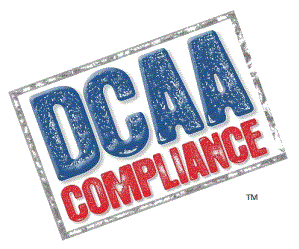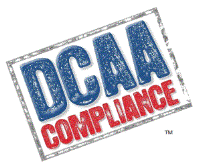The Armed Services Board of Contract Appeal is STILL down again for the second time in the last several months. I will not let this attack on democracy (although I am sure the government has an excellent reason for the prolonged denial of access to this information) stop our discussion of the TSI case.
Back to the recent Armed Services Board of Contract Appeals (ASBCA) Technology Systems, Inc. (TSI) (ASBCA 59577) and the nine areas I believe are worth discussing:
- Supporting Material Overhead rate
- DCAA auditor independence
- DCAA’s right to change their mind in subsequent audits
- Tax vs. Book on depreciation issues
- Bonuses
- Accrued Costs crossing fiscal year
- Unapproved subcontractors
- An excellent example of DCAA properly developing findings.
- Documenting consultants work product
The scratched out areas were discussed in previous articles. Today, I am going to talk about depreciation. Again, I am not a lawyer and this is not legal advice.
Depreciation
Depreciation and its evil sister Amortization often result in contractor upset stomachs and a desire to find a nice quiet spot somewhere where accountants can be beaten with long thin sticks. Tax and GAAP rules often differ significantly and can result in reconciling differences the contractor must track. To further add to this complexity, many accelerated tax depreciation methods are available for defined periods or under special conditions due to political decisions to impact the economy. Some depreciation methods are even restricted to certain neighborhoods (Okay, enterprise zones).
Too many contractors avoid this complexity and stick with a simple universal method for both tax and their financial (GAAP) books. This can cost the contractor real money but allows these individuals to sleep better.
TSI appears to have been one of those contractors who tried to keep tax and financial accounting together. Up until the year in question (2007), they depreciated their assets on a multiyear basis but in 2007 they ‘expensed’ out $26,198 in computer equipment of which $18,840 went onto the tax return as capital assets and expensed under Section 179. They claimed the full amount on the incurred cost submission.
TSI came up with an after-the-fact argument that reasonably argued some of the costs were not capital costs (short life), but admitted that not all of the costs fell into this category and could not identify the different equipment.
The Board took notice that TSI did not have any depreciation polices in 2007 or the previous years. In absence of contractor policies, the Board relied on consistency and noted that previous to 2007 the contractor utilized multiyear depreciation. As a result, TSI lost most of the 26k it expensed on the incurred cost proposal.
Depreciation policies and procedures are not specifically addressed in DCAA’s preaward audit program or in the government’s SF 1408. This is another excellent reason why contractors should adopt comprehensive policies and procedures and move past what DCAA looks at initially. The only real FAR restriction for small contractors, as noted by the Board, is not to charge the government more than is found on your financial books.
Depreciation Lessons
- Depreciate Often and Wisely – Contractors should take advantage of tax benefits allowed and should set up systems that allow the differences between tax and GAAP to track easily by utilizing memorandum or reversing journal entries as a simple example. Many software programs offer to track this difference with little effort. This leads to the second point.
- Policies and Procedures Protect and Explain – It is not just about compliance, excellent policies and procedures serve as a roadmap allowing a contractor to see where they have been (current policy and procedure) and figure out where they want to be (adapted policy and procedures). To phrase this in a way many of my engineering clients will appreciate: How can you begin to discuss modifications to a design without the current specification sitting in front of you? Policies and Procedures are your business specifications.
- Excellent Policies and Procedures are Dynamic – Want to adapt accelerated depreciation? Look at your needs, GAAP, and other compliance issues and move forward. Just do not forget to include the changes on your Schedule M.
One final note, the Board, as is typical, ordered the government and TSI to recalculate the rates based on the Board’s decision. I wonder if there will be arguments on the allowable 2007 depreciation, given the lack of governing policies and procedures? I imagine they will eventually agree on the method used in previous years, but the DCAA may have question about those now that the light is focused on the issue. I am also curious if DCAA proposed disallowing ALL of the 2007 depreciation and the Board caught this.

